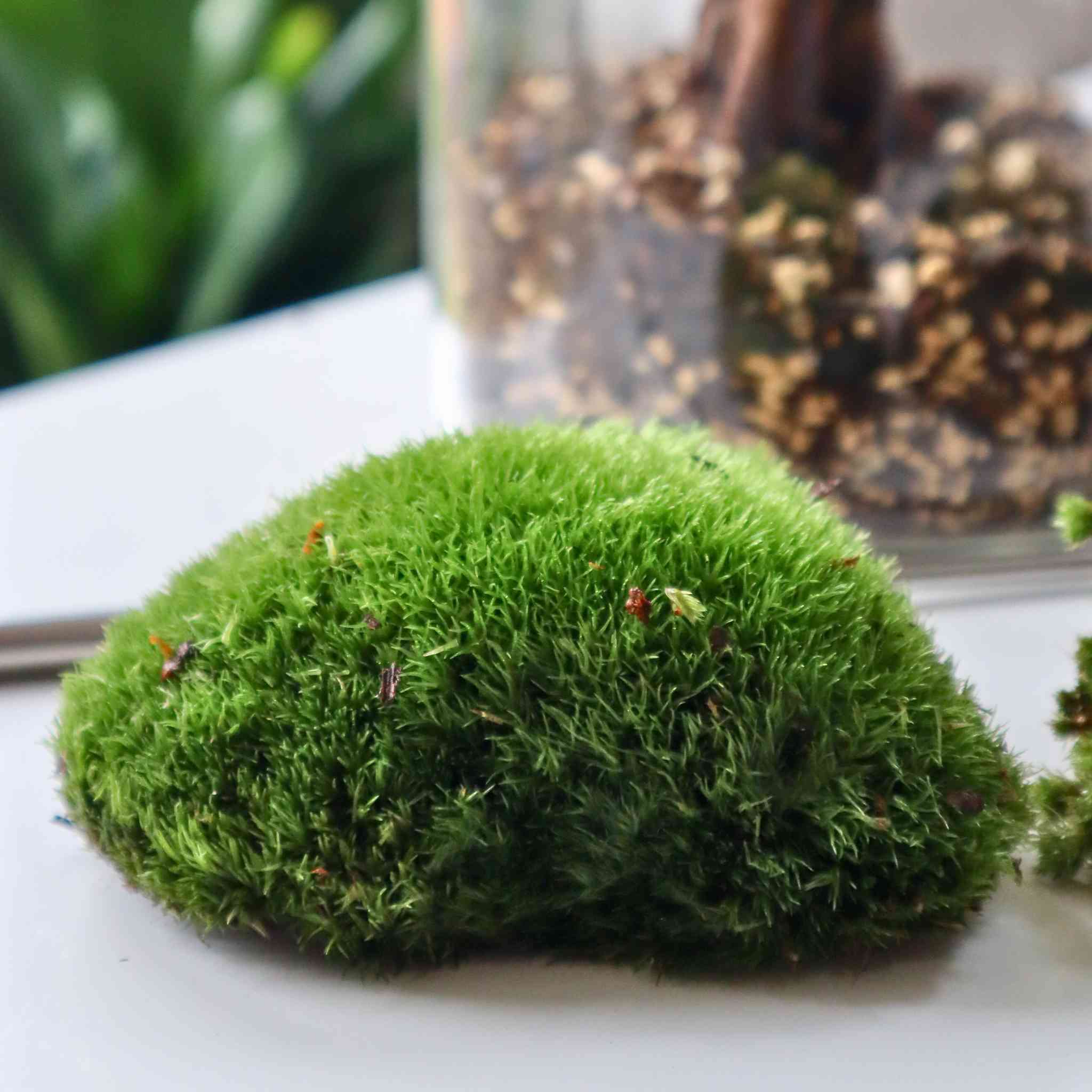
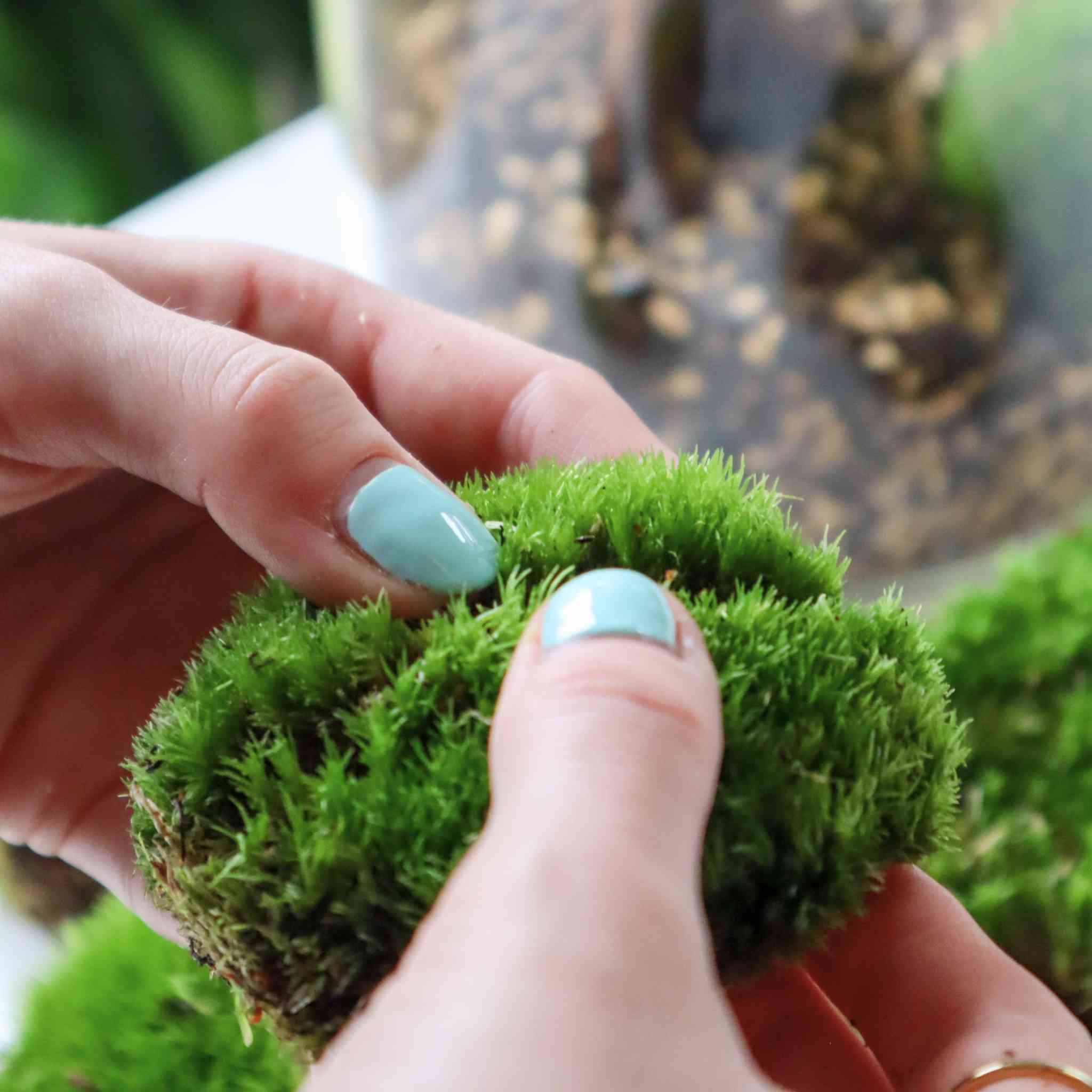
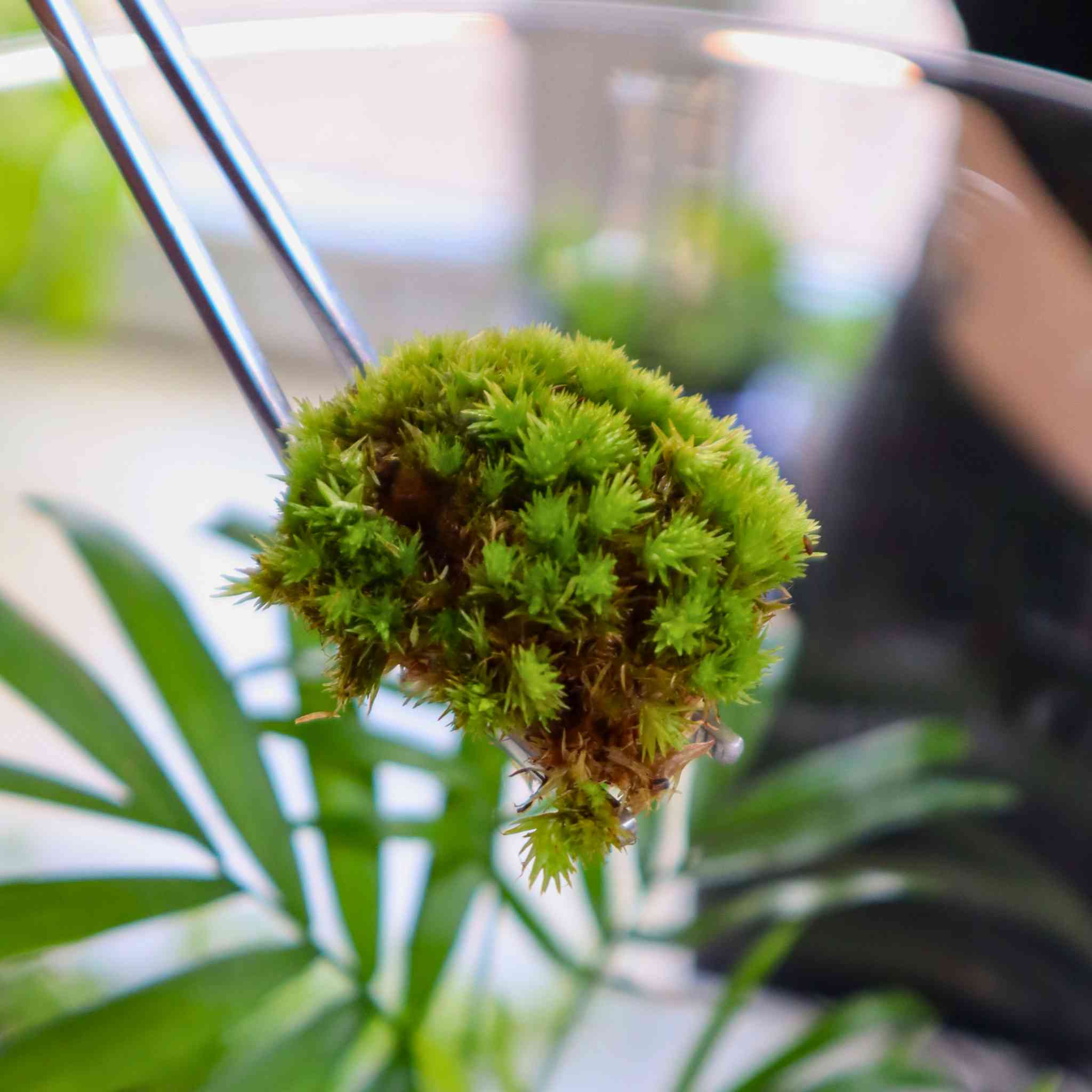
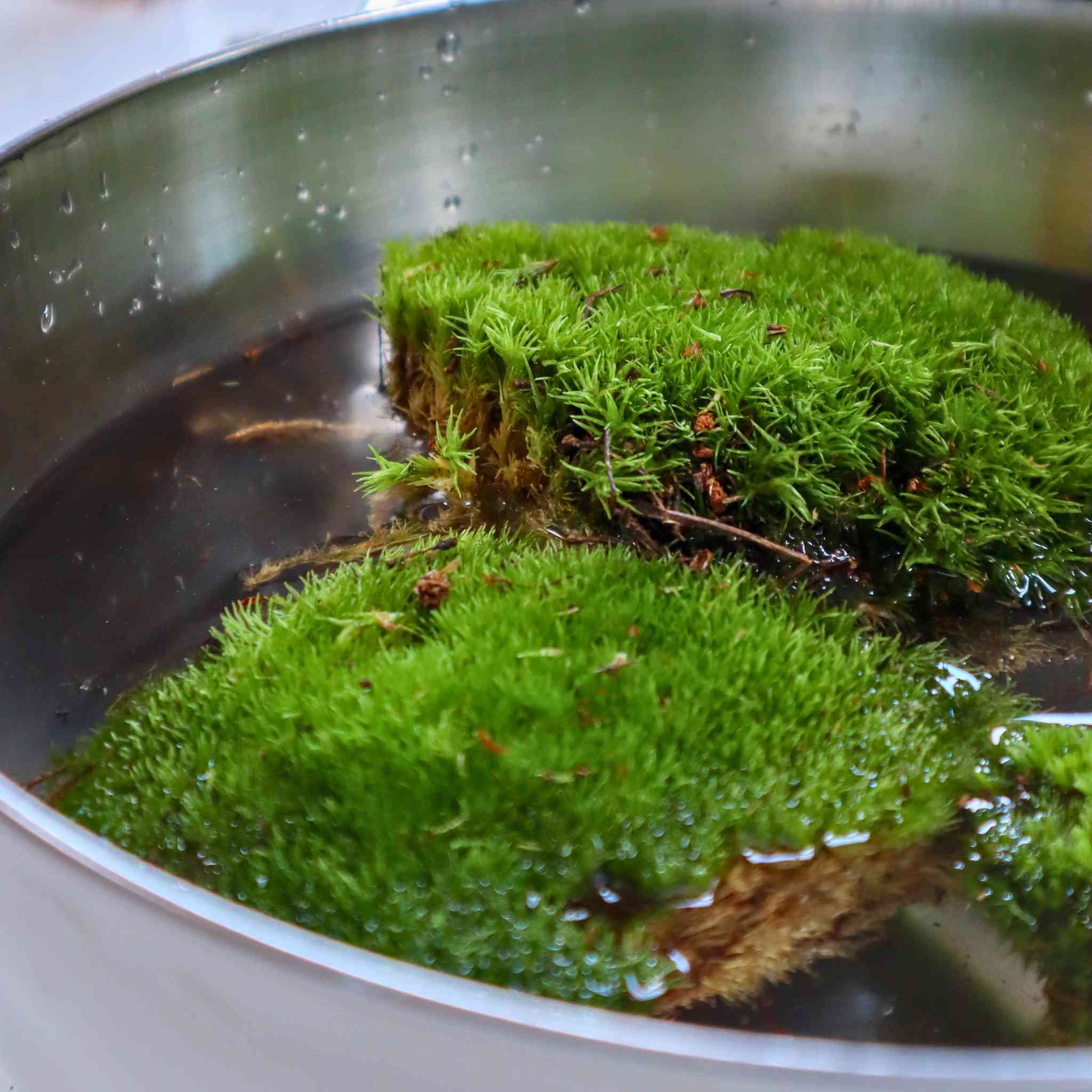
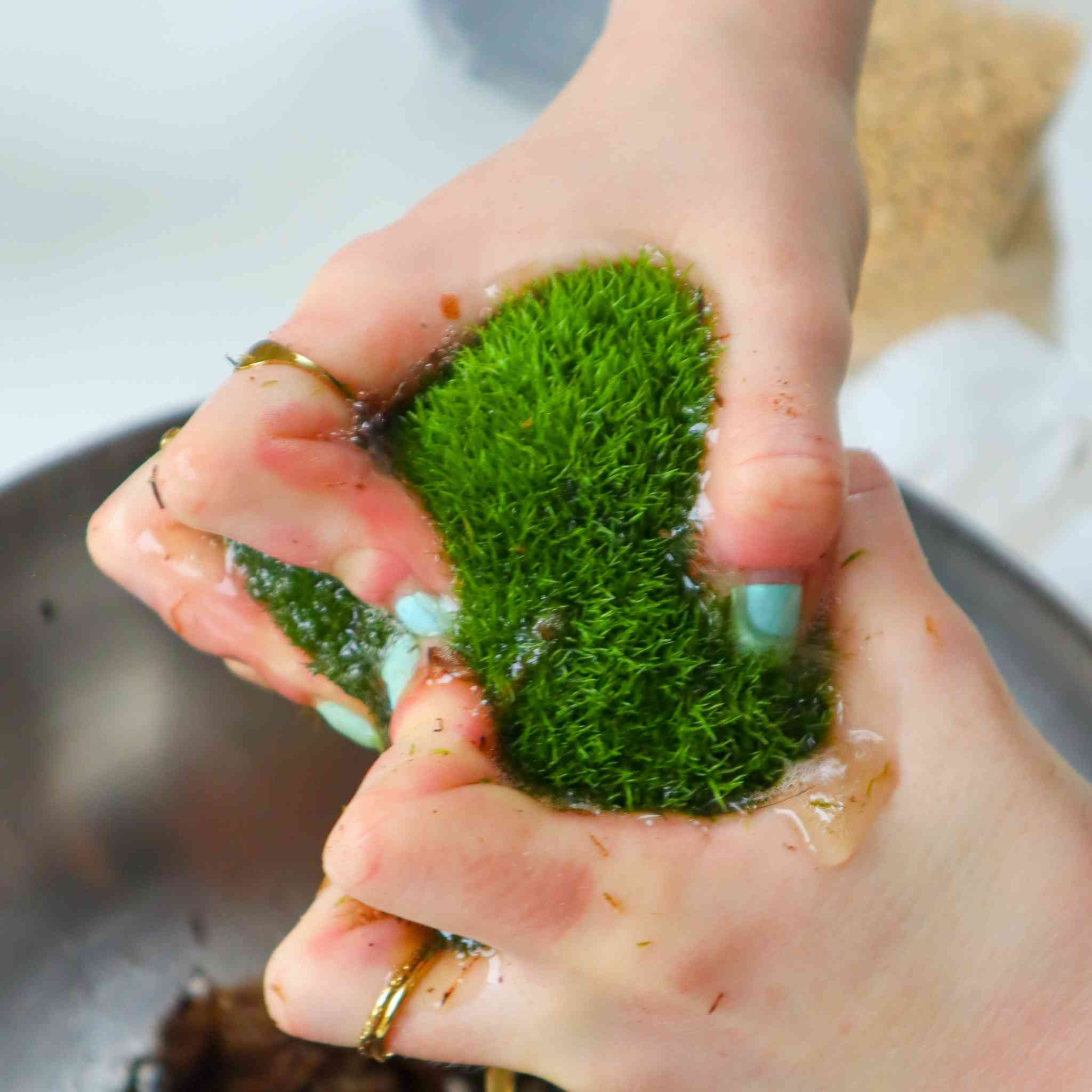
Live Cushion Moss (Bun Moss / Pillow Moss)
Cushion Moss is the classic terrarium moss. Verdant green and effortlessly bouncy, this moss is a perfect complement for ornamental terrariums and crafty projects alike.
*This species (Leucobryum glaucum) is also known as Pillow Moss, Bun Moss, and Pincushion Moss - its characteristic mossy mounds have many endearing names.
We ship our moss dried/dormant. All you need to do is soak your moss in water before use, and it’ll spring back to life!
We've optimized our moss packaging for shipping. Rest assured, you're definitely getting the square footage you ordered! It'll just arrive in a different shape/configuration.
- Small - 6x6 Inches.
- Medium - 8x9 inches.
- Large - 2x (8x9 inches).

"Great value - lots of moss for the price. Easy to rehydrate and springs right back to life."
"Healthy moss and a nice addition to my Vivarium. I’ve ordered more!"
"Rehydrated easily. Generous amount."
Key Benefits
Vibrant and plush Cushion Moss for terrariums
*This naturally harvested moss may bring a touch of the wild with it (easily cleared through the rehydration process).
This temperate moss can handle a wide range of terrarium conditions, making it a low-maintenance choice for projects of all kinds.
Picked from private land. Only a small percentage of the moss is harvested at a time, allowing for sustainable regrowth.
Cushion Moss tends to grow outward a little but remains largely in place, keeping your arrangement intact.
The low-growing fuzzy tufts of Pillow Moss provide the distinctive look of rolling hills and an easy way to add some natural shapes and soft textures to a terrarium.
Bun moss easily breaks apart as necessary to create the perfect-sized clumps for any terrarium space.
FAQ
Have a Cushion Moss question? We're here to help.
Check out the most common questions our customers ask. Have questions about something else? See our dedicated FAQ page!
How do you keep Cushion Moss alive?
The humid and moist conditions of a closed terrarium are perfect for this moss. For the full details, check out our Cushion Moss Care Guide.
Does Pincushion Moss spread?
Honestly, not really. It’ll grow outward somewhat and the leaves will become more fleshy, but it doesn’t spread like a Sheet Moss.
Does Pillow Moss need soil?
Yes. Though moss doesn’t have roots, it does gain important moisture and stability from being placed on top of soil.
Mood Moss vs Cushion Moss?
Both are acrocarpous (clumpy) mosses that are great for terrariums. Mood Moss has more of a wild, dynamic look, and Cushion Moss is more elegant and structured.
Do I need to use the moss right away?
Though dormant moss can be stored in a dark, dry area for months, we recommend only doing this if it is completely dried. Make sure you remove it from the sealed bag to prevent mold, too. For best results, it’s always a good idea to use your moss sooner rather than later.
How to hydrate dried/dormant moss?
All you need to do is leave your moss to soak in water for 30 minutes and squeeze out the excess moisture. It’ll come out looking extra green and fresh.
Can you use this live moss in moss bowls or moss walls?
Though technically possible, we don’t recommend live moss for these kinds of projects. Live moss requires consistent moisture and humidity which is difficult to provide in an open setting. Preserved moss is a much better fit!
Is this moss safe for use in reptile/amphibian enclosures?
This moss is organic, so you can be sure it’s harvested from a pesticide and fungicide free area. However it is still from a natural, and therefore non-sterile, environment. Many vivarium pet experts use sterile cultured moss instead to make sure there’s nothing unwanted/harmful brought in on the moss.
